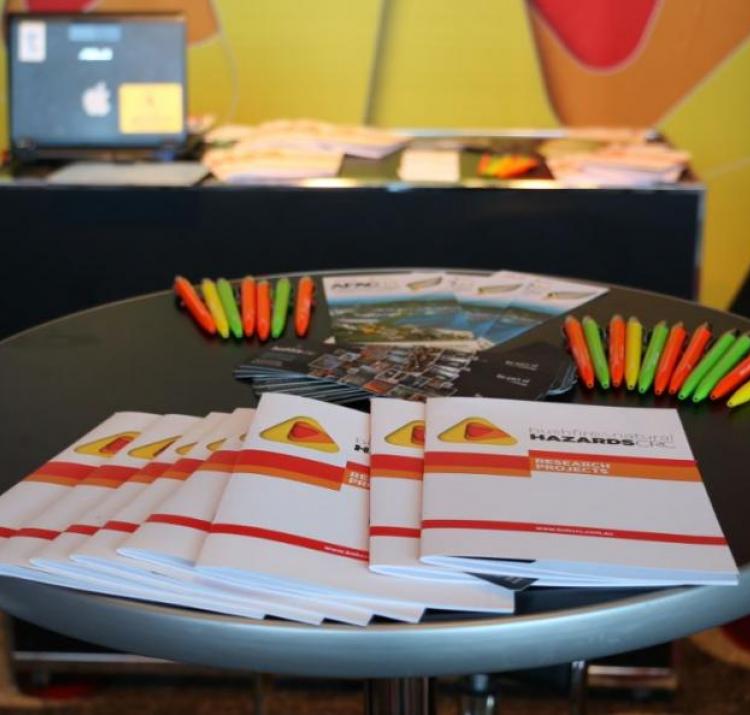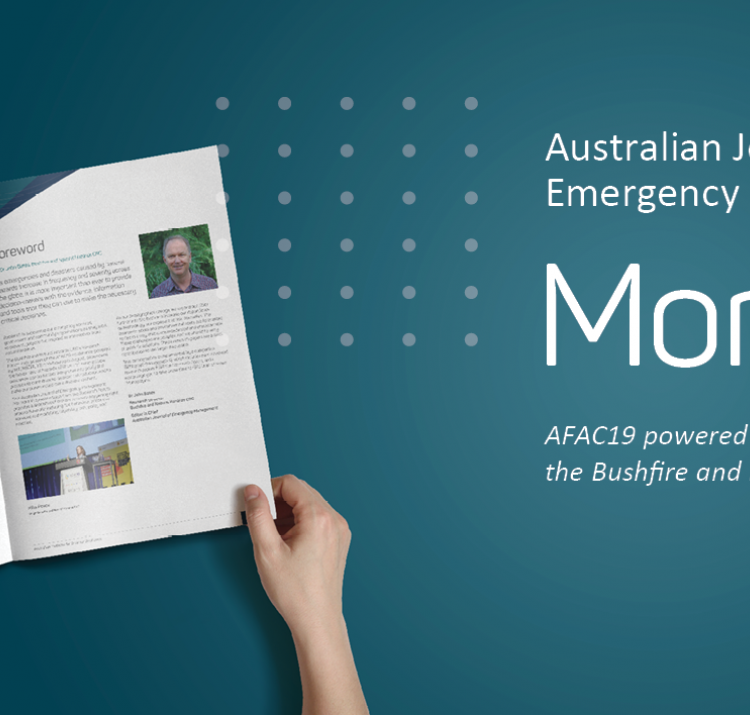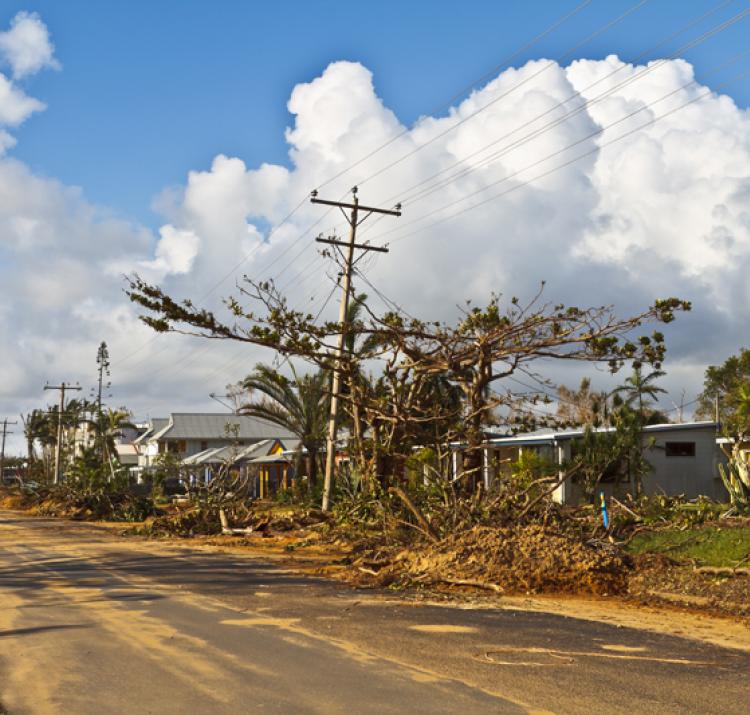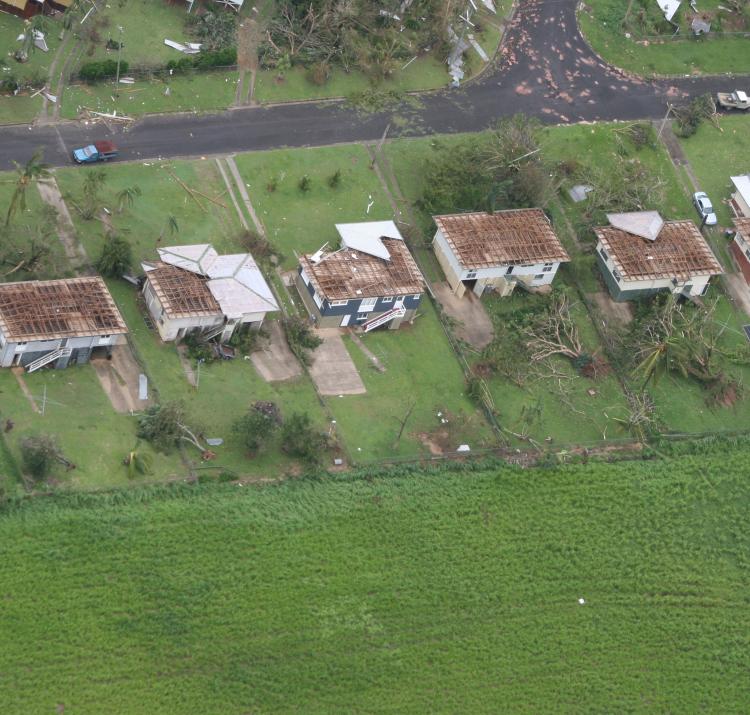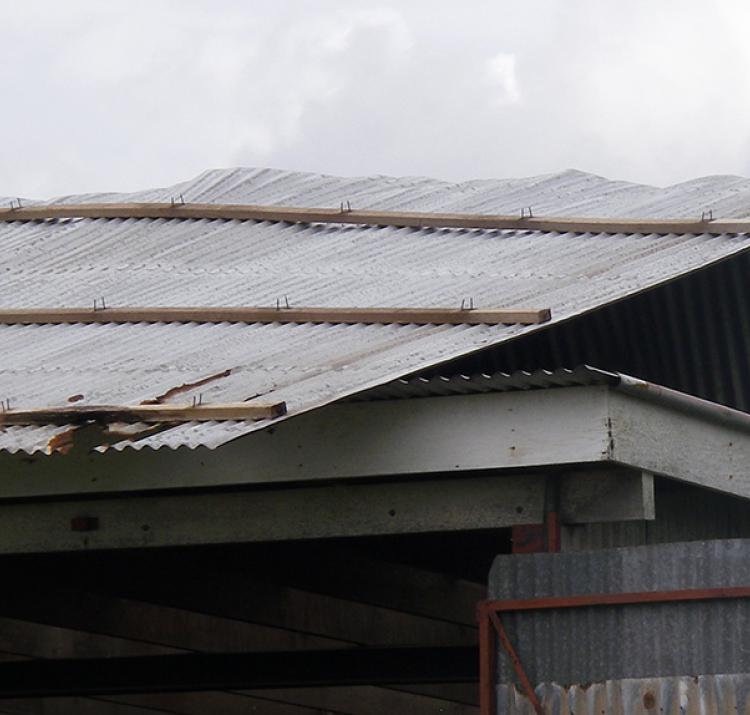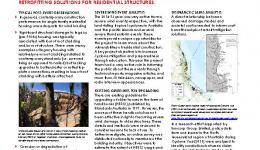|
2021 |
Report |
Ginger, J. et al. Improving the resilience of existing housing to severe wind events - final project report. (Bushfire and Natural Hazards CRC, 2021). |
|
2020 |
Report |
Parackal, K. et al. Improving the resilience of existing housing to severe wind events: annual report 2019-2020. (Bushfire and Natural Hazards CRC, 2020). |
|
2019 |
Book Chapter |
Krupar, III, R. & Smith, D. J. Hurricane Risk 1, 199-214 (Springer, 2019). |
|
2019 |
Conference Paper |
Parackal, K. et al. Modelling the vulnerability of a high-set house roof structure to windstorms using VAWS . Bushfire and Natural Hazards CRC Research Day AFAC19 (2019). at <https://knowledge.aidr.org.au/resources/australian-journal-of-emergency-management-monograph-series/> |
|
2019 |
Report |
Parackal, K., Ginger, J., Wehner, M. & Henderson, D. Retrofitting of a high-set Queensland house for wind loading. (Bushfire & Natural Hazards CRC, 2019). |
|
2019 |
Report |
Henderson, D., Smith, D., Parackal, K. & Ginger, J. Analysis of damage surveys of houses and preliminary input of VAWs. (Bushfire and Natural Hazards CRC, 2019). |
|
2019 |
Report |
Henderson, D. et al. Improving the resilience of existing housing to severe wind events in Australia Annual Report 2017-2018. (Bushfire and Natural Hazards CRC, 2019). |
|
2019 |
Report |
Parackal, K. et al. Model for assessing the vulnerability of Australian housing to windstorms - VAWS. (Bushfire and Natural Hazards CRC, 2019). |
|
2019 |
Report |
Parackal, K., Ginger, J., Henderson, D. & Wehner, M. Community benefits of roof upgrades. (Bushfire and Natural Hazards CRC, 2019). |
|
2019 |
Report |
Ginger, J. et al. Improving the resilience of existing housing to severe wind events - annual report 2018-19. (Bushfire and Natural Hazards CRC, 2019). |
|
2019 |
Report |
Parackal, K., Ginger, J., Leblais, A. & Henderson, D. Rainwater ingress through residential sliding doors. (Bushfire and Natural Hazards CRC, 2019). |
|
2018 |
Conference Paper |
Henderson, D., Smith, D. & Ginger, J. Large damage bills to buildings from cyclones can be reduced by small actions. AFAC18 (Bushfire and Natural Hazards CRC, 2018). |
|
2018 |
Conference Paper |
Bates, J. Research proceedings from the 2018 Bushfire and Natural Hazards CRC and AFAC Conference. Bushfire and Natural Hazards CRC & AFAC annual conference 2017 (Bushfire and Natural Hazards CRC, 2018). |
|
2018 |
Journal Article |
Parackal, K., Ginger, J. & Henderson, D. Wind load fluctuations on roof batten to rafter/truss connections. Journal of Wind Engineering & Industrial Aerodynamics 175, (2018). |
|
2018 |
Journal Article |
Jayasinghe, N., Ginger, J., Henderson, D. & Walker, G. Distribution of wind loads in metal-clad roofing structures. Journal of Structural Engineering 144, (2018). |
|
2018 |
Journal Article |
Stewart, M., Ginger, J., Henderson, D. & Ryan, P. Fragility and climate impact assessment of contemporary housing roof sheeting failure due to extreme wind. Engineering Structures 117, 464-475 (2018). |
|
2018 |
Report |
Leblais, A. & Henderson, D. Simulated wind load strength testing of entrance doors. (Bushfire and Natural Hazards CRC, 2018). |
|
2018 |
Report |
Leblais, A. & Henderson, D. Simulated wind load strength testing of soffits. (Bushfire and Natural Hazards CRC, 2018). |
|
2017 |
Journal Article |
Smith, D., Krupar, III, R., Henderson, D. & Mason, M. S. Analysis of rapid damage assessment data following severe windstorm events. Australian Journal of Emergency Management 32, (2017). |
|
2017 |
Report |
Kloetzke, T. et al. Severe wind hazard preliminary assessment: Tropical Cyclone Debbie, Whitsunday Coast, Queensland, Australia. (James Cook University, 2017). at <https://www.jcu.edu.au/__data/assets/pdf_file/0005/422951/TC-Debbie-Rapid-Assessment-Report_v8.pdf> |
|
2017 |
Report |
Boughton, G. N. et al. Tropical Cyclone Debbie: damage to buildings in the Whitsunday Region. Technical report (James Cook University, Cyclone Testing Station) (James Cook University, 2017). at <https://www.jcu.edu.au/__data/assets/pdf_file/0009/461178/TC-Debbie-report.pdf> |
|
2017 |
Report |
Henderson, D. et al. Improving the resilience of housing to severe wind events: annual project report 2016-17. (Bushfire and Natural Hazards CRC, 2017). |
|
2016 |
Conference Paper |
Rumsewicz, M. Research proceedings from the 2016 Bushfire and Natural Hazards CRC and AFAC conference. Bushfire and Natural Hazards CRC & AFAC annual conference 2016 (Bushfire and Natural Hazards CRC, 2016). |
|
2016 |
Conference Paper |
Harwood, J., Smith, D. J. & Henderson, D. Building community cyclone resilience through academic and community partnership. AFAC16 (Bushfire and Natural Hazards CRC, 2016). |
|
2016 |
Journal Article |
Leitch, C. J., Ginger, J. & Holmes, J. D. Wind loads on solar panels mounted parallel to pitched roofs, and acting on the underlying roof. Wind and Structures 22, 307-328 (2016). |
|
2016 |
Journal Article |
Smith, D., Masters, F. J. & Chowdhury, A. G. Investigating a wind tunnel method for determining wind-induced loads on roofing tiles. Journal of Wind Engineering and Industrial Aerodynamics 155, 47-59 (2016). |
|
2016 |
Journal Article |
Smith, D., McShane, C., Swinbourne, A. & Henderson, D. Towards effective mitigation strategies for severe wind events. The Australian Journal of Emergency Management 31, (2016). |
|
2016 |
Journal Article |
Satheeskumar, N., Henderson, D., Ginger, J. & Wang, C. H. Wind uplift strength capacity variation in roof-to-wall connections of timber-framed houses. Journal of Architectural Engineering 22, (2016). |
|
2016 |
Report |
Smith, D. et al. Improving the resilience of existing housing to severe wind events: Annual project report 2015-2016. (Bushfire and Natural Hazards CRC, 2016). |
|
2015 |
Conference Paper |
Rumsewicz, M. Research proceedings from the 2015 Bushfire and Natural Hazards CRC & AFAC conference. Bushfire and Natural Hazards CRC & AFAC annual conference 2015 (Bushfire and Natural Hazards CRC, 2015). |
|
2015 |
Conference Paper |
Henderson, D. & Ginger, J. Improving the Resilience of Existing Housing to Severe Wind Events Conference Paper 2014. Bushfire and Natural Hazards CRC and AFAC Wellington Conference 2014 (2015). |
|
2015 |
Journal Article |
Smith, D., Henderson, D. & Terza, L. M. Modelling cyclone loss mitigation using claims analysis. (2015). |
|
2015 |
Journal Article |
Smith, D., Roueche, D., Thompson, A. P. & Prevatt, D. O. A vulnerability assessment tool for residential structures and extreme wind events. (2015). |
|
2015 |
Report |
Henderson, D. Improving the Resilience of Existing Housing to Severe Wind Events Annual Report 2014. (2015). |
|
2015 |
Report |
Smith, D., Henderson, D., Ginger, J. & Wehner, M. Improving the resilience of existing housing to severe wind events: Annual project report 2014-2015. (Bushfire and Natural Hazards CRC, 2015). |
|
2014 |
Journal Article |
Smith, D., Masters, F. J. & Gurley, K. R. An historical perspective on the wind resistance of clay and concrete roofing tiles. RCI Interface 32, 22-35 (2014). |



















